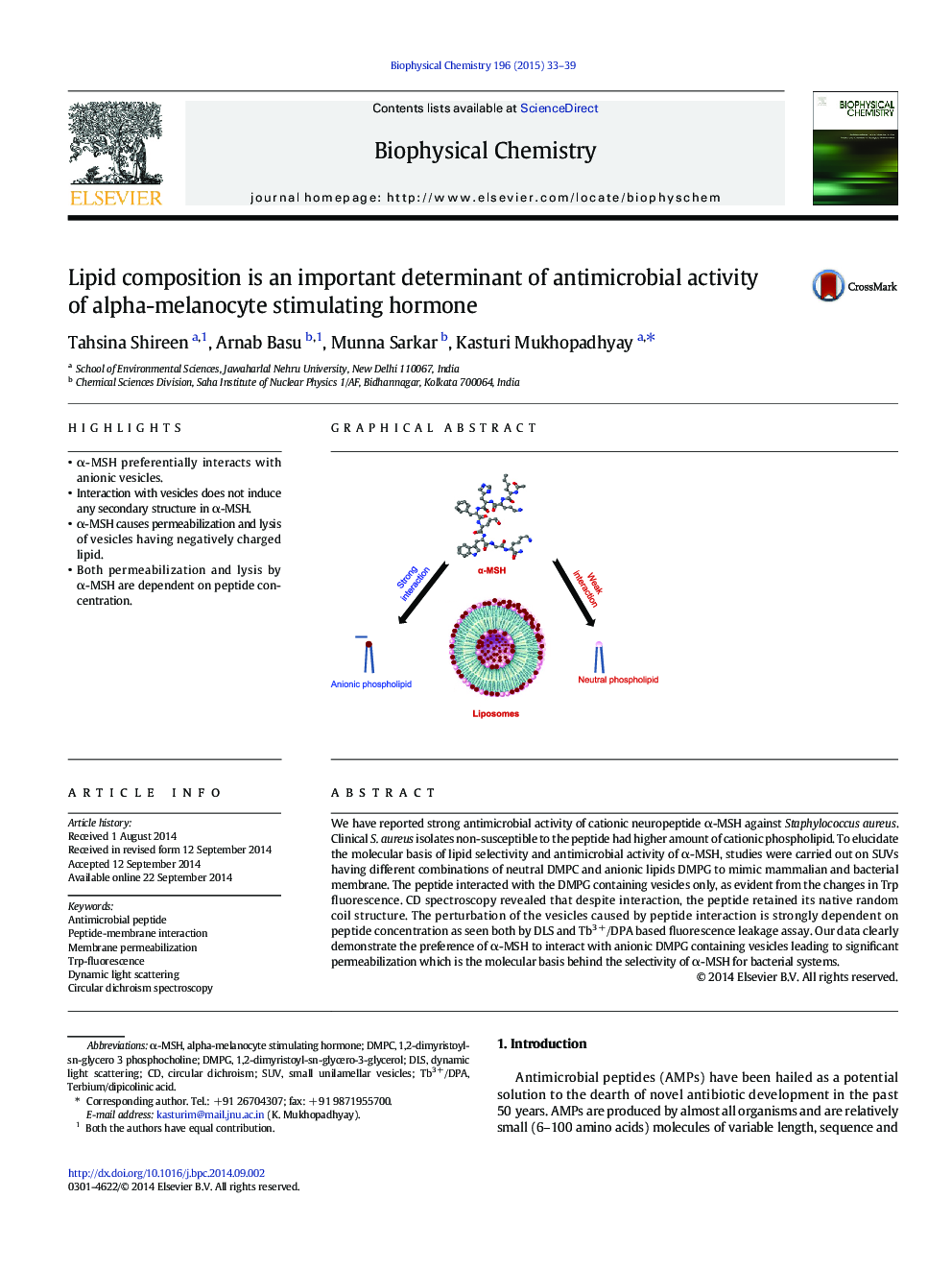| Article ID | Journal | Published Year | Pages | File Type |
|---|---|---|---|---|
| 5370893 | Biophysical Chemistry | 2015 | 7 Pages |
â¢Î±-MSH preferentially interacts with anionic vesicles.â¢Interaction with vesicles does not induce any secondary structure in α-MSH.â¢Î±-MSH causes permeabilization and lysis of vesicles having negatively charged lipid.â¢Both permeabilization and lysis by α-MSH are dependent on peptide concentration.
We have reported strong antimicrobial activity of cationic neuropeptide α-MSH against Staphylococcus aureus. Clinical S. aureus isolates non-susceptible to the peptide had higher amount of cationic phospholipid. To elucidate the molecular basis of lipid selectivity and antimicrobial activity of α-MSH, studies were carried out on SUVs having different combinations of neutral DMPC and anionic lipids DMPG to mimic mammalian and bacterial membrane. The peptide interacted with the DMPG containing vesicles only, as evident from the changes in Trp fluorescence. CD spectroscopy revealed that despite interaction, the peptide retained its native random coil structure. The perturbation of the vesicles caused by peptide interaction is strongly dependent on peptide concentration as seen both by DLS and Tb3 +/DPA based fluorescence leakage assay. Our data clearly demonstrate the preference of α-MSH to interact with anionic DMPG containing vesicles leading to significant permeabilization which is the molecular basis behind the selectivity of α-MSH for bacterial systems.
Graphical abstractDownload full-size image
